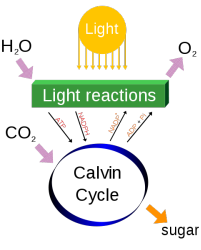Nutrition
________________________________________________________
Back to the Basics...
Datura stramonium
at its base is a part
of the kingdom plantae, and by nature thrives on a
process called photosynthesis to produce its needed
nurturance. Using primarily its leaves, jimson weed
utilizes water, carbon dioxide, and light to produce
sugars in structures known as chloroplasts. Also, the
roots of the plant absorb nurturance from the
surrounding soil to support the plants growth.
primarily its leaves, jimson weed
utilizes water, carbon dioxide, and light to produce
sugars in structures known as chloroplasts. Also, the
roots of the plant absorb nurturance from the
surrounding soil to support the plants growth.
Datura stramonium
is considered a photoautotroph because it derives its energy solely
from photosynthesis. In comparison the
Venus fly trap obtains energy from both from the sun and from
the consumption of other organisms. Jimson weed is resultantly
classified as a producer which in term of the food web and the flow
of energy through environments is located at its base. Although jimson
weed is not readily eaten by many organisms, it provides nurturance
for countless
insects and detritivores that can deal with its unique composition.
________________________________________________________
Jimson Weeds claim to fame!
Cation: The potency of alkaloids in Jimson Weed varies incredibly. Without proper measuring techniques, the use of Datura stramonium for recreational can be very dangerous; sometimes leading to hospitalization or even death. Also note that the hallucinations produced by these alkaloids are more commonly referred to as deliriums as they produce a complete inability to differentiate from the real world.
Datura stramonium is pretty basic when
it come to its acquisition of nurturance, but the
production of
alkaloids, a common trait in the
Solanaceae
family, is what has
 made jimson weed a popular
medicinal, recreational, and spiritual plant.
However, there are other organisms in the Solanaceae
family, such as
tobacco, which are much safer to use.
made jimson weed a popular
medicinal, recreational, and spiritual plant.
However, there are other organisms in the Solanaceae
family, such as
tobacco, which are much safer to use.
In the
Datura sp. the three main alkaloids
produced are atropine, hyoscyamine, and hyosine. In
Datura stramonium, these products are
produced in all parts of the plants, composing up to
.4 percent of the total weight of the plant. As
stated before the amount of each alkaloid varies
greatly and the above percentage is not considered a
hard fact because of this factor. For more
information of the uses of these alkaloids refer to
the facts page, not only are there interesting
and almost unbelievable stories, but also a listing
of the possible medicinal uses of
Datura
stramonium. As a side note the production of
alkaloids, like most other noxious compounds, are
evolutionary adaptations to increase the plants
ability to survive. Another evolutionary adaption
that protects Datura stramonium can be
found in it fruiting bodies, which are covered with
spike/thorns.
Knowing how Datura strmonium lives is fascinating, but the reproduction page will touch on more characteristic features of jimson weed.
...Or return to the home page for a fresh start.
